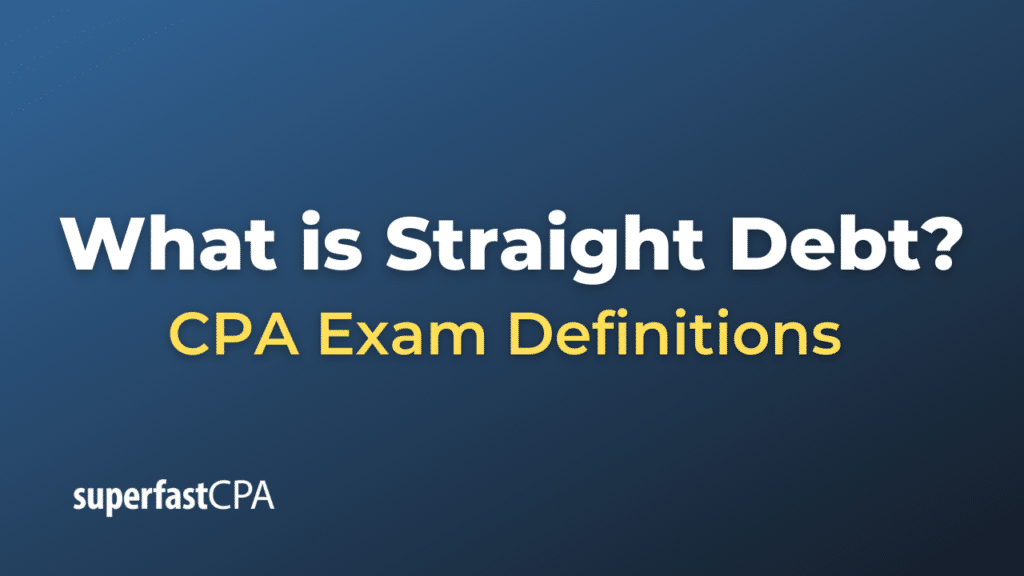Straight Debt
“Straight Debt” refers to a type of debt that does not have any features or options attached to it. It is a simple form of borrowing where the issuer promises to pay back the principal amount (the original borrowed amount) at a specified maturity date along with periodic interest payments, typically paid semiannually or annually, based on a predetermined interest rate.
In contrast to straight debt, there are other debt instruments like convertible bonds or bonds with embedded options. Convertible bonds, for instance, can be converted into equity (common shares) of the issuing company at specific times and under certain conditions. But straight debt remains just debt until maturity without any such options or features.
Straight debt is straightforward in its terms and conditions. Lenders know precisely how much they will receive and when. It is commonly issued by both corporations and governments.
Key Characteristics of Straight Debt:
- Fixed Interest Rate: The debt will have a predetermined interest rate, and the issuer pays this interest at regular intervals (e.g., semiannually) until maturity.
- Principal Repayment: The full principal amount of the bond is paid back to the bondholder at the bond’s maturity.
- No Conversion Features: The bond cannot be converted into shares or any other securities.
- Maturity Date: The bond has a specific date upon which the principal is returned to the bondholder and the bond ceases to exist.
- Credit Risk: Since it’s debt, the bondholder takes on the credit risk of the issuer. If the issuer defaults, the bondholder may not receive the interest payments or the return of principal.
- Priority in Liquidation: In the event of company liquidation, straight debt holders (or bondholders) typically have a higher claim on the company’s assets than equity shareholders.
Examples of straight debt include corporate bonds without any conversion features, treasury bonds, and most municipal bonds.
Example of Straight Debt
Let’s create a fictional example to illustrate straight debt.
Scenario: EverGreen Technologies Bond Issuance
EverGreen Technologies, a leading company in renewable energy solutions, decides to raise capital for its new solar project. The company chooses to issue straight debt in the form of corporate bonds.
Details of the Bond Issuance:
- Bond Name: EverGreen Tech 5-Year Bond
- Principal (Face Value): $1,000
- Interest Rate (Coupon Rate): 4% per annum
- Maturity: 5 years from the date of issuance
- Interest Payment: Semiannually
A potential investor, Mr. John, decides to purchase one of these bonds. Here’s what his investment would look like:
- Initial Investment: Mr. John purchases the bond for $1,000.
- Semiannual interest: Every six months, Mr. John would receive interest payments. The semiannual interest would be (4% of $1,000)/2 = $20. So, twice a year, he would receive $20, totaling $40 in interest annually.
- Maturity: After 5 years, when the bond reaches its maturity, EverGreen Technologies would pay back the original principal amount of $1,000 to Mr. John.
- Total Returns: Over the 5-year period, Mr. John would receive $40 (interest) x 5 (years) = $200 in total interest. Plus, he gets back his initial $1,000 investment at the end of the 5th year.
Throughout this entire process, Mr. John simply receives interest payments and then the return of principal at maturity. There are no options to convert the bond into company shares, nor are there any other special features. This is why it’s considered straight debt.













